Fully automatic pipeline dry cleaning and repairing system
17/05/2025
YGQJ-II Fully Automatic Tubing Dry Cleaning Device
I. Introduction The YGQJ-II Fully Automatic tubing Dry Cleaning Device is independently developed by our company in response to extensive user demands. This fully enclosed system integrates two processes into one unit: induction heating for external cleaning of tubings and mechanical descaling for internal cleaning, with an integrated environmental dust removal system. Equipped with dual-tube cleaning units, the device offers high efficiency, energy savings, and time reduction. It is capable of cleaning standard tubings contaminated with conventional oil residues, as well as heavy tubings with high viscosity and paraffin deposits. Additionally, it is suitable for cleaning water and oil well tubes with internal scaling. The device achieves excellent cleaning results even for complex mixtures of oil, wax, mud, and scale.
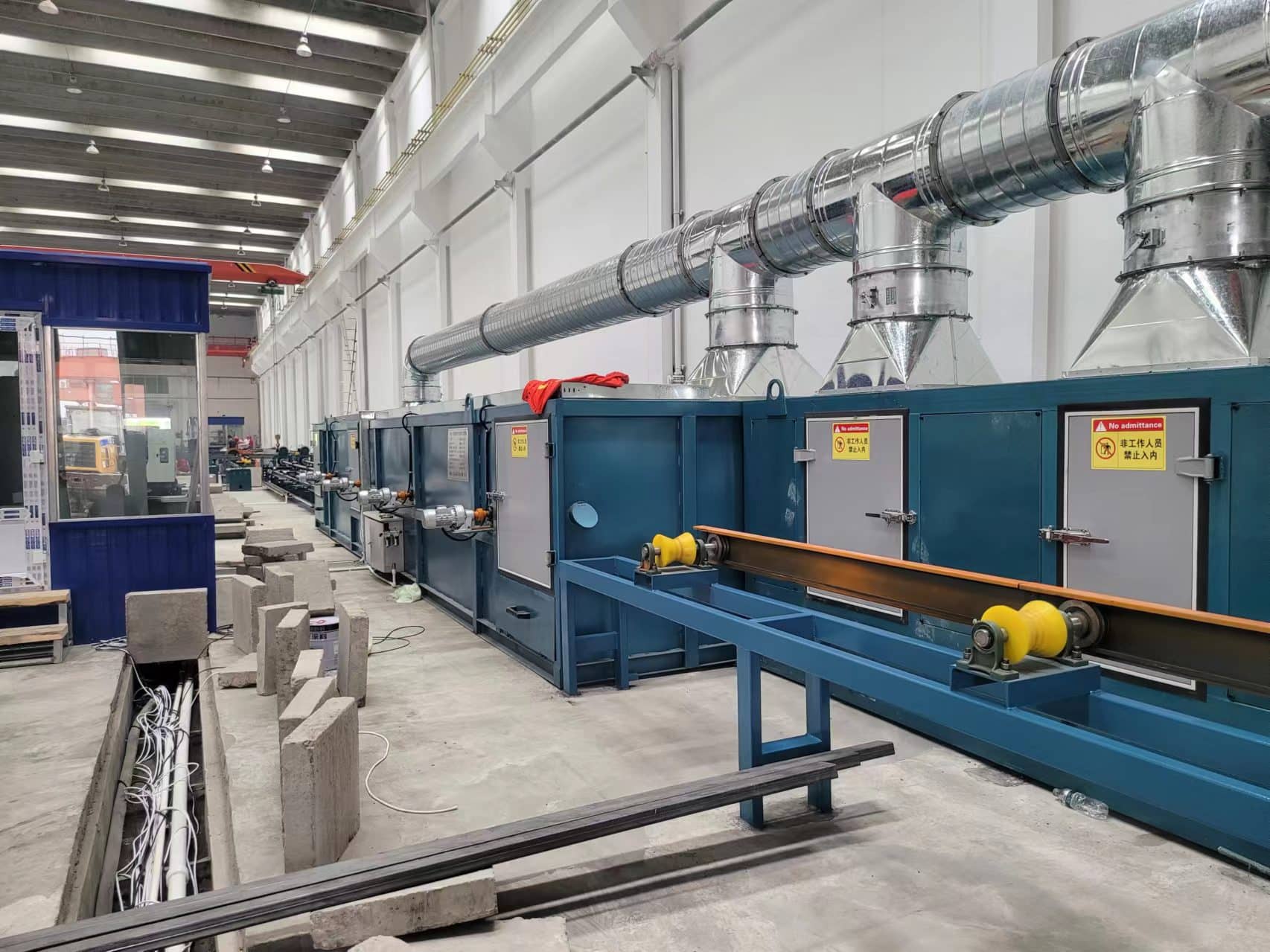
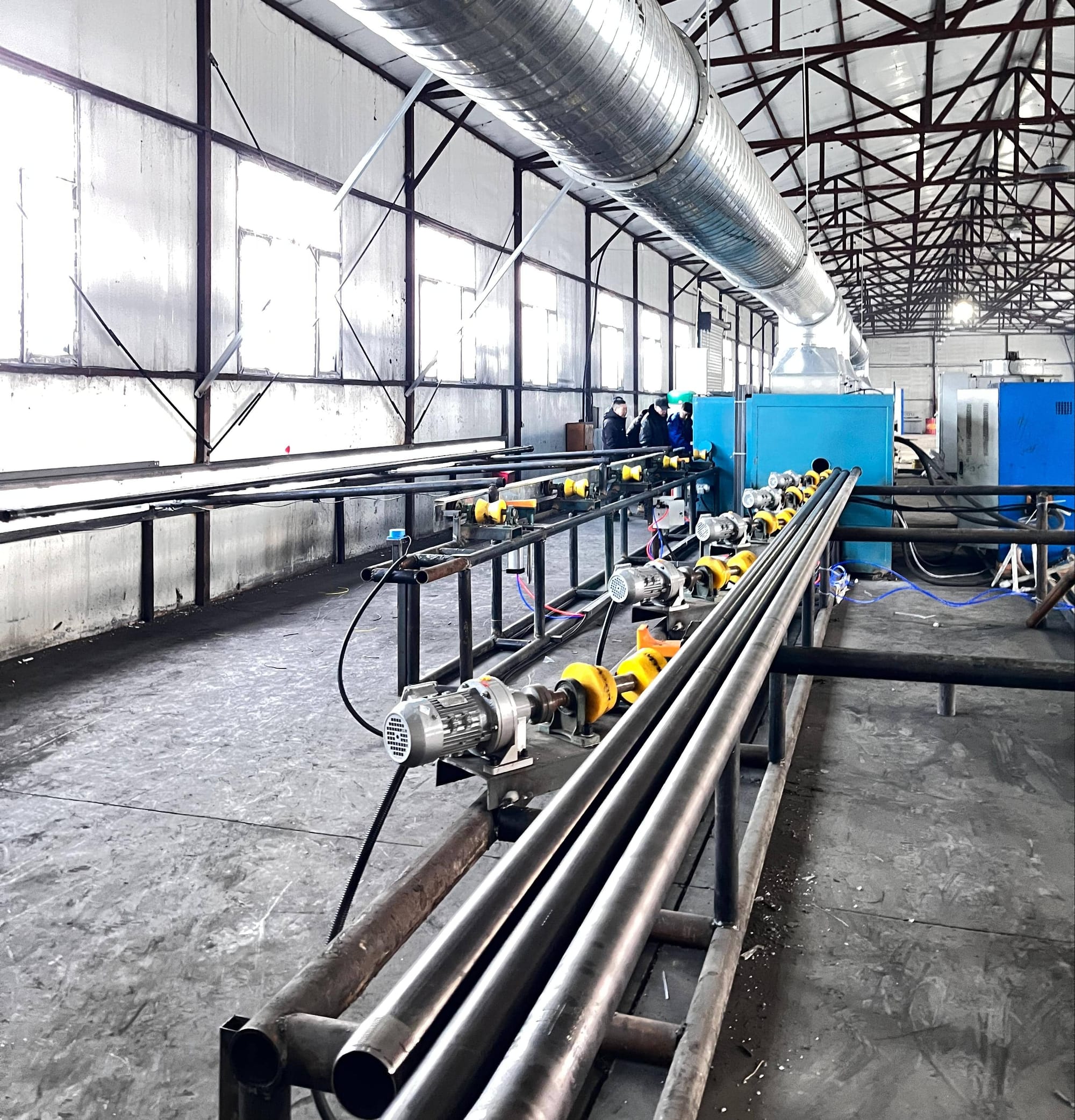
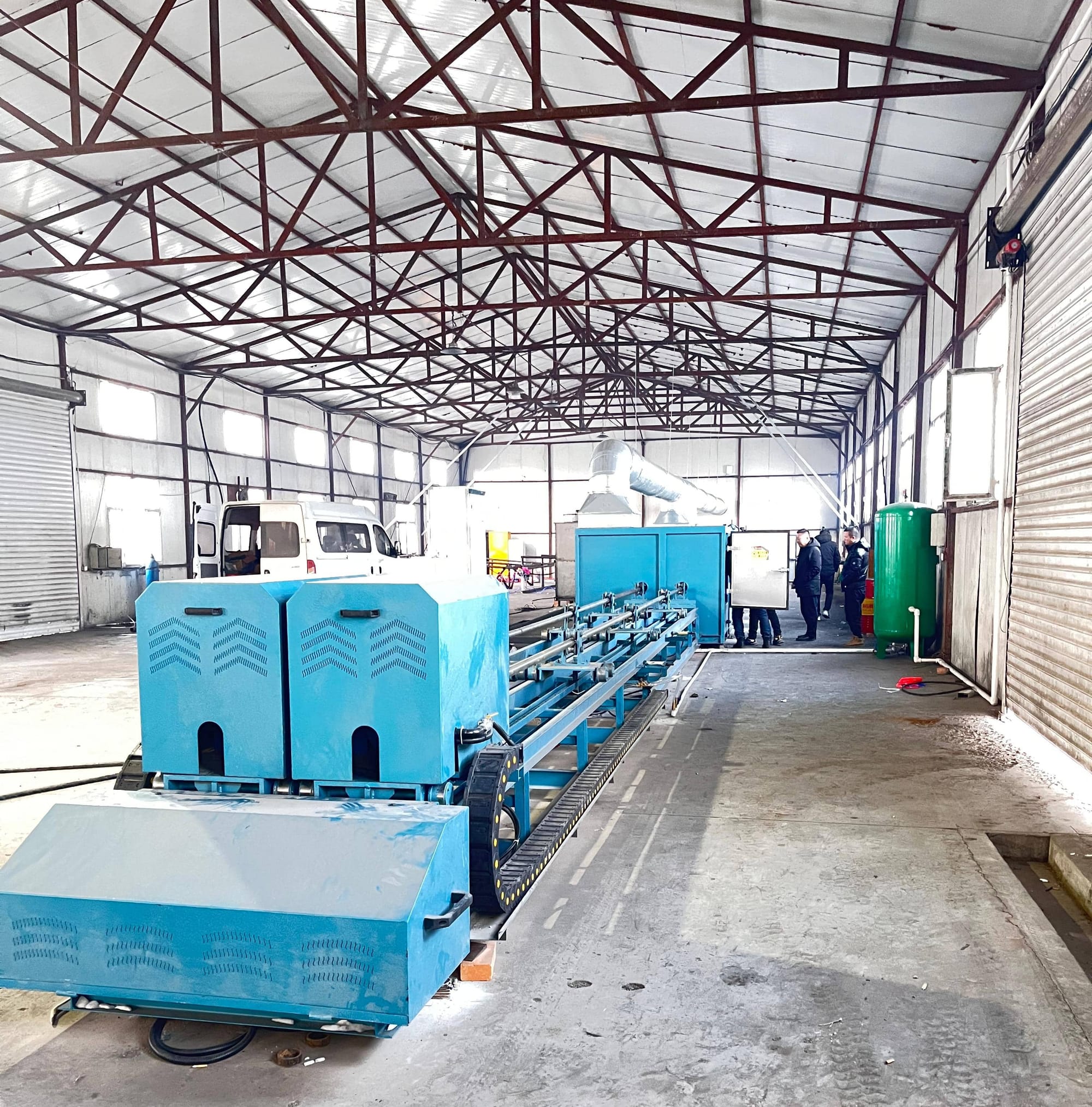
Technical Parameters and Equipment Configuration & Working Principle
II. Technical Parameters Total Installed Power: 45 kW Maximum Heating Capacity: 300 kW Compatible Tube Sizes: φ73, φ89 Internal Cleaning Rotation Speed: 100–700 rpm (adjustable) External Cleaning Rotation Speed: 1000 rpm Tube Feed Speed: 1–6 m/min (adjustable) Cleaning Speed: 8 m/min Air Blowing Pressure: ≥0.5 MPa Ambient Temperature Range: +1°C to +45°C Dimensions (L × W × H): 28,000 × 2,200 × 1,700 mm III. Equipment Configuration The system consists of: Frame, protective covers, cleaning units Loading/unloading mechanisms, tube drive mechanism Alignment system, calibration rod, blade scraping mechanism Induction heating system, infrared thermometer Waste discharge system, pulse dust removal PLC + computer automatic control system IV. Working Principle The fully enclosed system operates as follows: The tubing to be cleaned is transferred to the cleaning conveyor via the loading robot, and the tube entry gate is closed. The tube is advanced by the drive mechanism and pressing device. During movement, the tube undergoes induction heating while high-speed mechanical blades and steel brushes remove contaminants from both internal and external surfaces. Compressed air injected from the blade nozzles expels loosened residues and heated debris outside the tube. Dust is treated by the pulse dust collector, and waste is discharged via a conveyor for centralized disposal. Upon reaching the designated position, the PLC issues a reverse withdrawal command. The tube is then unloaded by the robotic arm onto the storage rack.
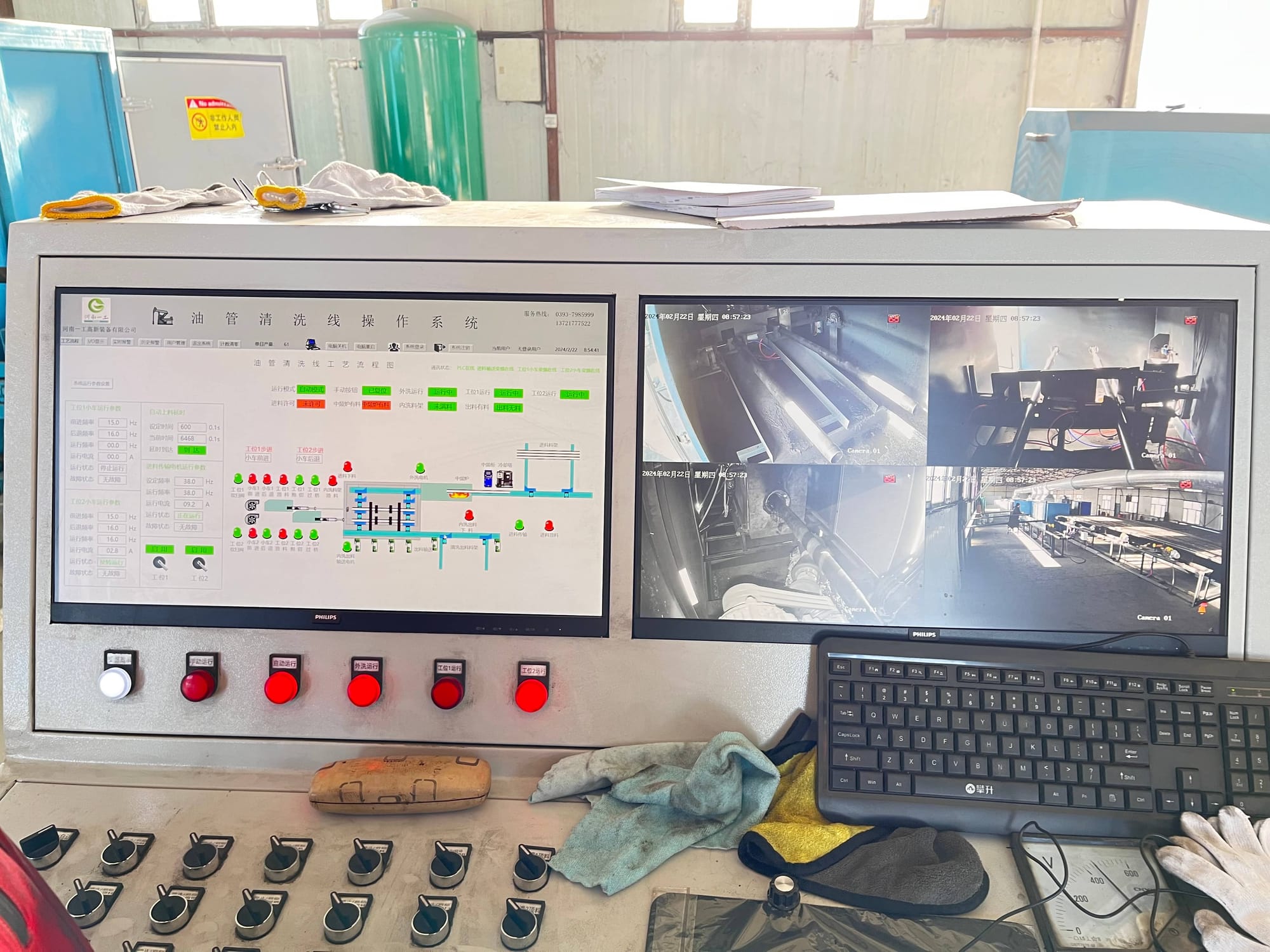
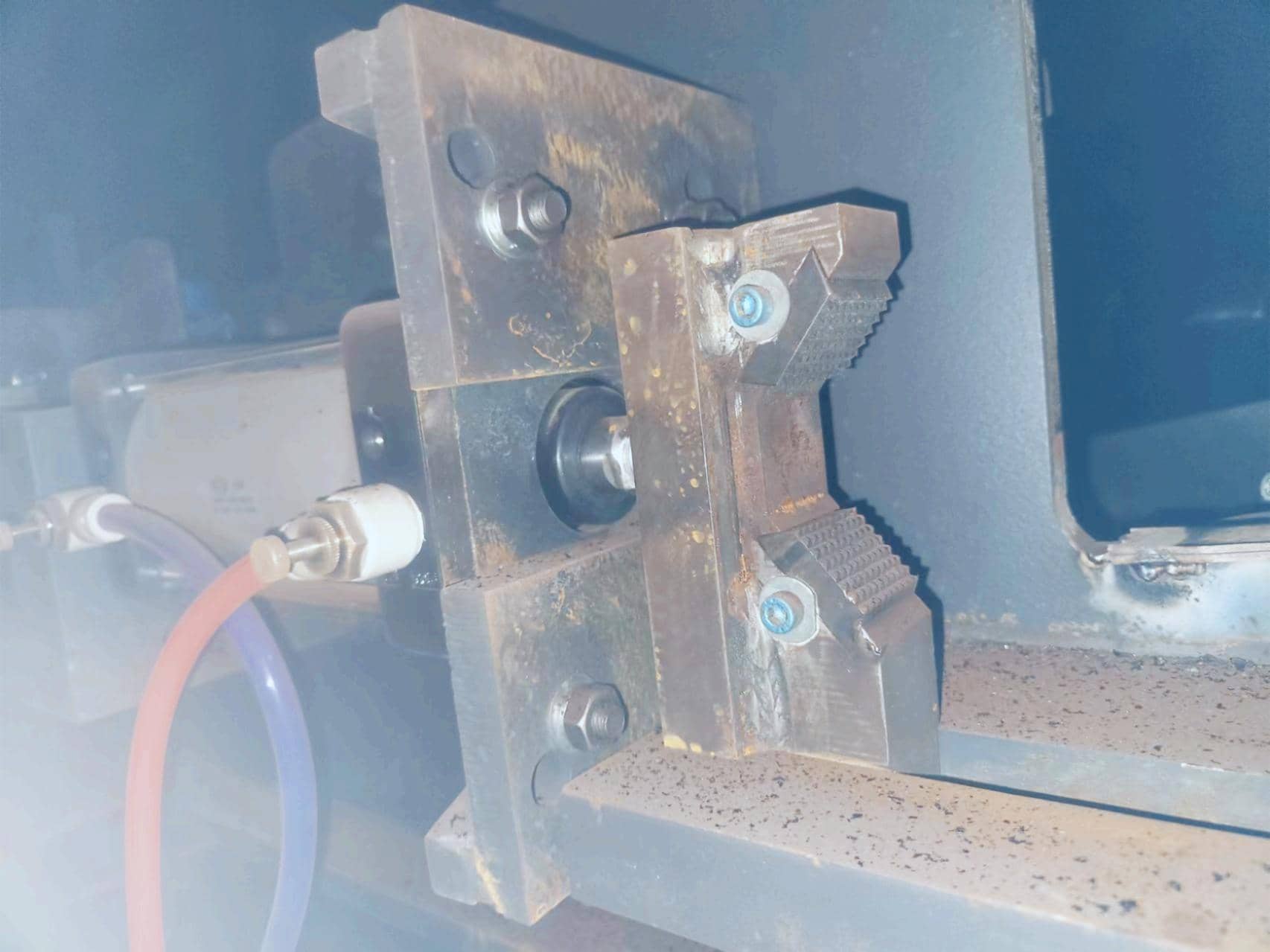
Features and Standards & Requirements
V. Features Efficient Cleaning: Induction heating instantly raises tube temperature to 100–240°C. High-speed rotating blades and brushes, combined with compressed air blowing, achieve superior cleaning compared to traditional methods, especially for heavily contaminated tubes. Dry Process & Energy Savings: On-demand operation eliminates the need for preheated water or insulation. The water-free design prevents wastewater leakage, ensuring a clean worksite. Compact Structure: Simultaneous internal and external cleaning in a single workstation, linear design, and space-saving layout reduce installation time and civil engineering costs. Environmental Compliance: Fully sealed structure prevents dust leakage. Quick-access maintenance doors facilitate inspection. Automated waste collection into dedicated bins. Air purification system ensures emissions meet environmental standards. VI. Standards & Requirements Control System: Supports independent automatic/manual operation for individual units. Applicable Standards: GB699: Technical Conditions for High-Quality Carbon Structural Steel GB1048: Nominal and Test Pressures for Pipes and Pipe Fittings GB4064: Safety Design Guidelines for Electrical Equipment GB10095: Accuracy of Involute Cylindrical Gears SY5037: General Technical Specifications for Assemblies of Petroleum Drilling Machinery SY5304: General Technical Specifications for Forgings in Petroleum Drilling Machinery SY5305: General Technical Specifications for Welding in Petroleum Drilling Machinery SY5308: General Technical Specifications for Painting of Petroleum Drilling Machinery SY5309: General Technical Specifications for Packaging of Petroleum Drilling Machinery HG20507: Selection Rules for Automatic Instrumentation HG20509: Design Requirements for Instrument Power Supply
